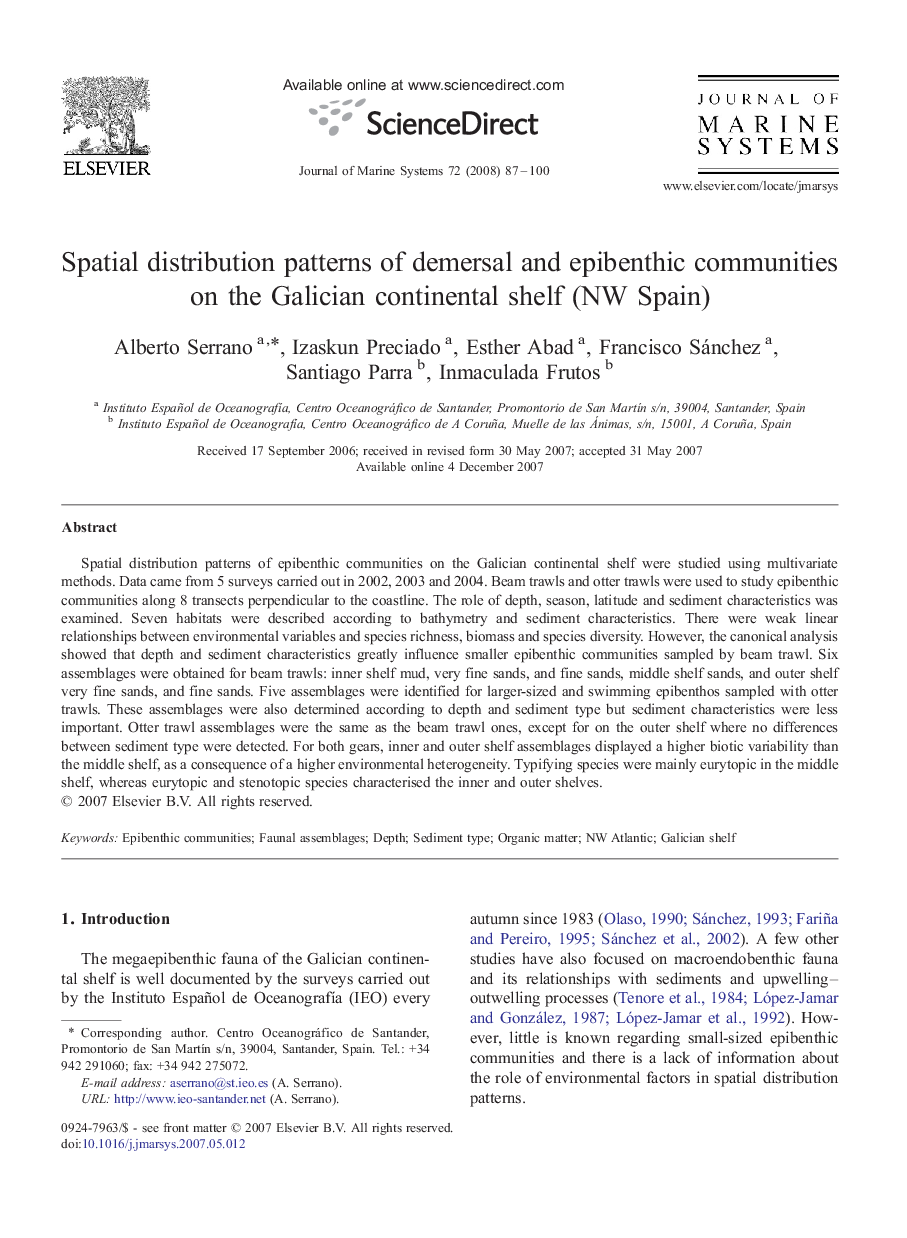| Article ID | Journal | Published Year | Pages | File Type |
|---|---|---|---|---|
| 4548829 | Journal of Marine Systems | 2008 | 14 Pages |
Spatial distribution patterns of epibenthic communities on the Galician continental shelf were studied using multivariate methods. Data came from 5 surveys carried out in 2002, 2003 and 2004. Beam trawls and otter trawls were used to study epibenthic communities along 8 transects perpendicular to the coastline. The role of depth, season, latitude and sediment characteristics was examined. Seven habitats were described according to bathymetry and sediment characteristics. There were weak linear relationships between environmental variables and species richness, biomass and species diversity. However, the canonical analysis showed that depth and sediment characteristics greatly influence smaller epibenthic communities sampled by beam trawl. Six assemblages were obtained for beam trawls: inner shelf mud, very fine sands, and fine sands, middle shelf sands, and outer shelf very fine sands, and fine sands. Five assemblages were identified for larger-sized and swimming epibenthos sampled with otter trawls. These assemblages were also determined according to depth and sediment type but sediment characteristics were less important. Otter trawl assemblages were the same as the beam trawl ones, except for on the outer shelf where no differences between sediment type were detected. For both gears, inner and outer shelf assemblages displayed a higher biotic variability than the middle shelf, as a consequence of a higher environmental heterogeneity. Typifying species were mainly eurytopic in the middle shelf, whereas eurytopic and stenotopic species characterised the inner and outer shelves.
